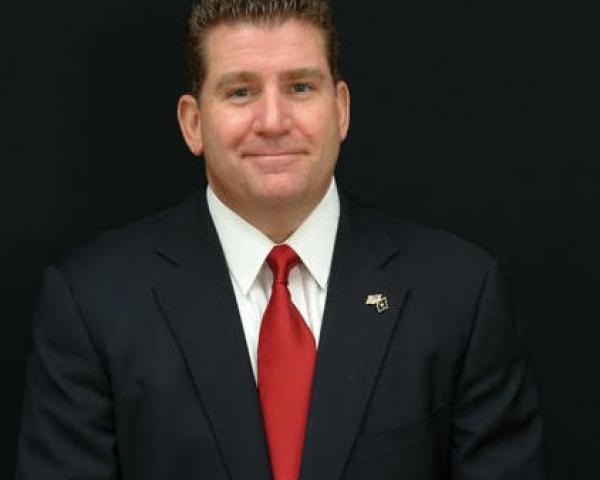From the day a business opens its doors, it is exposed to a variety of risks. Owning an art business is no different. The first thing any owner should do is make sure to have sufficient insurance in place to provide financial protection. For those invested in their art inventory or art-related risk exposure, it is important to consider the risk factors, including the financial risk exposed to your business as a whole. Good insurance programs are created by brokers who interview their clients and tailor the insurance policies to their needs. Remember, communication is key. Below is a list of some of the possible coverages business owners may need to help protect their art and business.
1) Building Insurance
If you own a building, coverage should be for the standard “all risk” perils on a replacement cost basis (no deduction for depreciation). Check the co-insurance clause to be sure you are carrying the proper amount of insurance. If possible, the “agreed amount” endorsement should be attached, which eliminates any possible co-insurance penalty at the time of a loss. Deductibles are available to lower premiums. Building insurance usually excludes boilers, machinery, air conditioning equipment and outdoor swimming pools. Boiler insurance can be purchased separately. Flood and earthquake are normal exclusions in most property policies, but these perils can sometimes be insured - usually under separate policies.
2) Contents Insurance
On a standard “all risk” basis to business equipment, drapes, leasehold improvements, equipment (your telephone system if you own it), etc., coverage is usually written on an actual cash value basis. Ask about replacement cost, and check the co-insurance clause to be certain you are carrying the proper amount of insurance. Coverage may be limited to the premises named in the policy, and generally, office contents insurance is not designed to cover personal property of partners and employees (coats, wallets, money, jewelry, etc.).
3) Papers and Records Replacement Insurance
Standard “all risk” coverage provides for reimbursement of the cost to reproduce books of account and other business records.
4) Library Insurance
Standard “all risk” insurance covers the cost of reproducing or replacing books and manuscripts. Those items that cannot be reproduced or replaced should be reviewed to add to your fine art insurance policy.
5) Computer Insurance
A special computer policy is available to insure the hardware, software and extra expenses, which covers the additional cost to continue operations following an insured loss.
6) Rental Value
If you own a building and rent a part or all of it to others, you can insure for the rent you lose while the building is untenantable because of an insured loss. Check the co-insurance clause on rent insurance to be certain you are carrying the proper amount.
7) Leasehold Interest Insurance
If you lease your office premises and such lease agreement has a cancellation clause in the event of a catastrophic fire, you would find it necessary to lease other premises at potentially higher rental cost per month. Leasehold interest insurance can be purchased to protect you against the difference in your rental cost—up to the time your previous lease would have normally terminated.
8) Extra Expense Insurance
This provides reimbursement of extra expenses incurred to keep your business going as fully as possible after an insured loss has occurred. Some forms of this insurance are written with a monthly time limitation.
9) Plate Glass Insurance
If you own your building, you can elect to insure against plate glass breakage. If you do not own the building, your lease agreement may require you to carry plate glass insurance (if there is a plate glass exposure). The cost to re-letter glass can also be insured.
See also: Future of Insurance: Risk Pools of One
10) All Risk Floaters
Coverage is available to cover camera equipment and valuable works of art in your offices, and camera equipment, computer equipment and similar property you take away from your office premises.
11) Account Receivable Insurance
If your records of accounts receivable were destroyed, you would have no record of outstanding accounts on which to collect monies due to you. Accounts receivable insurance would reimburse you for these outstanding accounts.
12) Business Interruption Insurance
For loss of earnings, insurance is available to reimburse you for the profits you would lose while your business is closed as a result of an insured loss. The insurance can be arranged to include reimbursement for payroll and other continuing expenses.
13) Blanket Bond
Blanket bonding is available to cover all employees and partners. The Employee Retirement Income Security Act of 1974 requires that trustees of your pension plan be bonded.
14) Money and Securities
The basic contents insurance limits or excludes coverage on money and securities. Specific protection is available to cover both on and off your premises, for example, a messenger going to the bank. Underwriters would be interested to know if you have a safe (type and model). Also, let the a broker know how much you usually have on hand in cash and how much in checks— this can make a difference in the premium.
15) Depositor’s Forgery Coverage
Banks are responsible for any forged instruments they accept. However, their insurance is usually purchased with a large deductible. Depositor’s forgery offers protection to retain the goodwill of your banking connections and to avoid discussions with the bank in the event of a loss. It covers loss resulting from forgery of checks and other documents issued by your firm.
16) Comprehensive General Liability
This is for protection against third-party bodily injury and property damage claims related to your premises and operations necessary and incidental thereto. Employees should be included as additional insured; if you lease, the lease agreement may also require the landlord to be named.
17) Medical Payments Insurance
Medical payments insurance is available in connection with comprehensive general liability to provide reimbursement of medical expenses for a third party injury on your premises regardless of your legal liability. For instance, a client trips over his own feet, falls and cuts his hand. While not legally liable, you may want to offer to pay his doctor bills. Medical payments would cover this exposure.
18) Professional Liability
This provides coverage for direct pecuniary loss and expense arising from claims for alleged neglect, error or omission in the performance of services in a professional capacity. Policies usually carry a mandatory deductible clause.
19) Foreign Liability
It is important to note that most liability insurance policies are limited to claims within the U.S. and Canada. If you have operations overseas, your liability insurance should be extended to cover worldwide. Each country has specific insurance requirements. You should check for insurance laws that are local in your business operation.
20) Products Liability
If you are involved in the selling, distribution, serving or give-away of any type of product, products liability should be purchased for protection against product claims.
21) Personal Injury Liability
This is important protection against claims involving false arrest, detention, malicious prosecution, libel, slander or defamation of character.
22) Fire Legal Liability
If you do not own the building you occupy, the owners or building management could hold you legally liable in the event of fire damage to the building premises caused by your negligence.
23) Contractual Liability
Any contracts you sign should be reviewed by your insurance broker to review and determine if liability assumed by contract is acceptable. Liability assumed by contract is not automatically also assumed by that party’s insurance carrier. Discussion with your insurance broker may be required as well as amendment to your insurance policy.
24) Publisher’s Liability
This coverage indemnifies you against loss through libel or the infringement of rights, pertaining to loss of privacy, plagiarism, piracy or copyright infringement.
25) Non-owned Auto Liability
Employees or other persons may use their own autos for your business or rent autos in your name for business trips. If a person is involved in an accident, the injured party may name your business in a suit. This insurance would protect the business. As per your state requirements, individuals should carry his or her own personal automobile insurance for coverage as an operator. Most standard non-ownership forms exclude coverage for a partnership in respect to the individual partner using his or her auto for business purposes, but this exclusion can be deleted for an additional premium.
26) Host Liquor Liability
This coverage protects your business against claims based on serving liquor. For example, an intoxicated guest could be involved in an auto accident after leaving your premises, resulting in a claim against the business. Host Liquor Liability should be assumed by your caterer or the party that is selling alcohol (in addition to having the appropriate licensing as required in your jurisdiction).
27) Employee Benefits Liability
This is coverage against claims in regard to handling employee benefits funds.
28) Umbrella Liability
This provides blanket protection over and above your primary liability program. It also covers unusual hazards that do not come under primary policies such as property of others in your care, custody or control or occasional overseas exposure.
29) Workers’ Compensation
This is mandatory coverage for employees. Be certain that the policy includes all states in which your business has employees, and that the classifications on the policy apply to your operations.
30) Disability Benefits Insurance
This is third-party coverage, statutory in some states, to provide coverage for employees hurt off the job.
See also: Is This the Largest Undisclosed Risk?
31) Accident Insurance
Coverage can be arranged in various ways to meet the requirements of your business, either to cover business travel only or 24-hour pleasure and business protection.
32) Key Man Insurance
This coverage reimburses the business for financial loss resulting from the death of a key person in the firm.
33) Partnership Insurance
If your business is a partnership, this insurance provides cash to carry out a buy-or-sell agreement in the event of death of a partner.
34) Kidnap/Ransom Coverage
Kidnap of executives (or members of their families) and payment of ransom demands is a growing concern. This insurance covers reimbursement of ransom payments and related losses and expenses.
This article is provided for general informational purposes only and is not intended to provide individualized business, risk management or legal advice. You should discuss your individual circumstances thoroughly with your legal and other advisers before taking any action with regard to the subject matter of this article. Only the relevant insurance policy provides actual terms, coverages, amounts, conditions and exclusions for an insured. All of the hazards lit up in green are hazards that are applicable to that specific address. Not every address will have every hazard, as hazards are regional in nature. For example, Florida sinkholes only happen in Florida, while tsunamis only happen to places with exposure to the Pacific Ocean. Once you’ve identified the risk types to be aware of you, can investigate further by getting the Risk Exposure Report Card, with grades specific to the address.
For 701 South Miami Ave., Miami, the Risk Exposure Report Card looks like this:
All of the hazards lit up in green are hazards that are applicable to that specific address. Not every address will have every hazard, as hazards are regional in nature. For example, Florida sinkholes only happen in Florida, while tsunamis only happen to places with exposure to the Pacific Ocean. Once you’ve identified the risk types to be aware of you, can investigate further by getting the Risk Exposure Report Card, with grades specific to the address.
For 701 South Miami Ave., Miami, the Risk Exposure Report Card looks like this:

 As you can see, at this address you (and the three little pigs) have a lot more to be concerned about than just Wolf-Based Wind.
As you can see, at this address you (and the three little pigs) have a lot more to be concerned about than just Wolf-Based Wind.

















